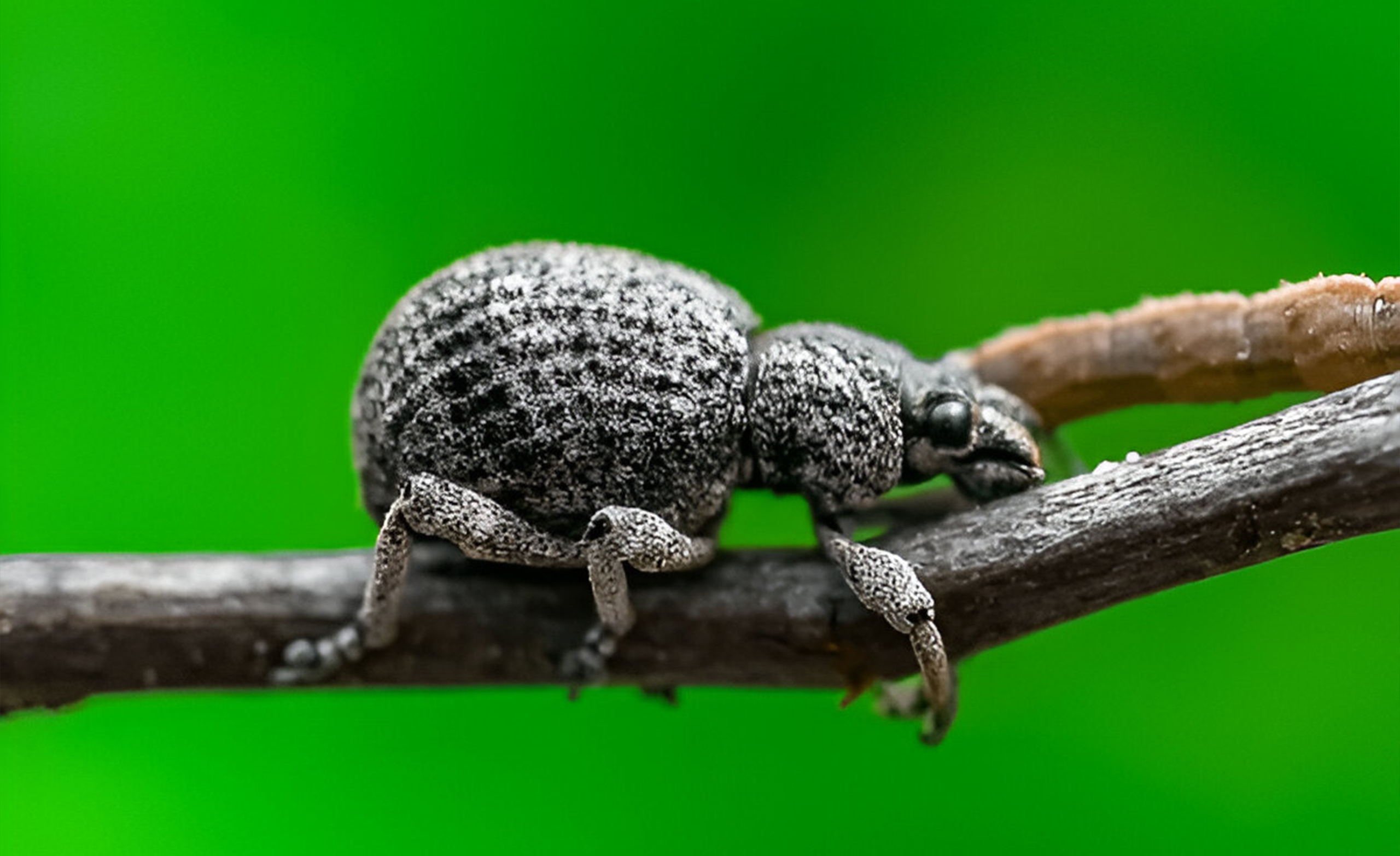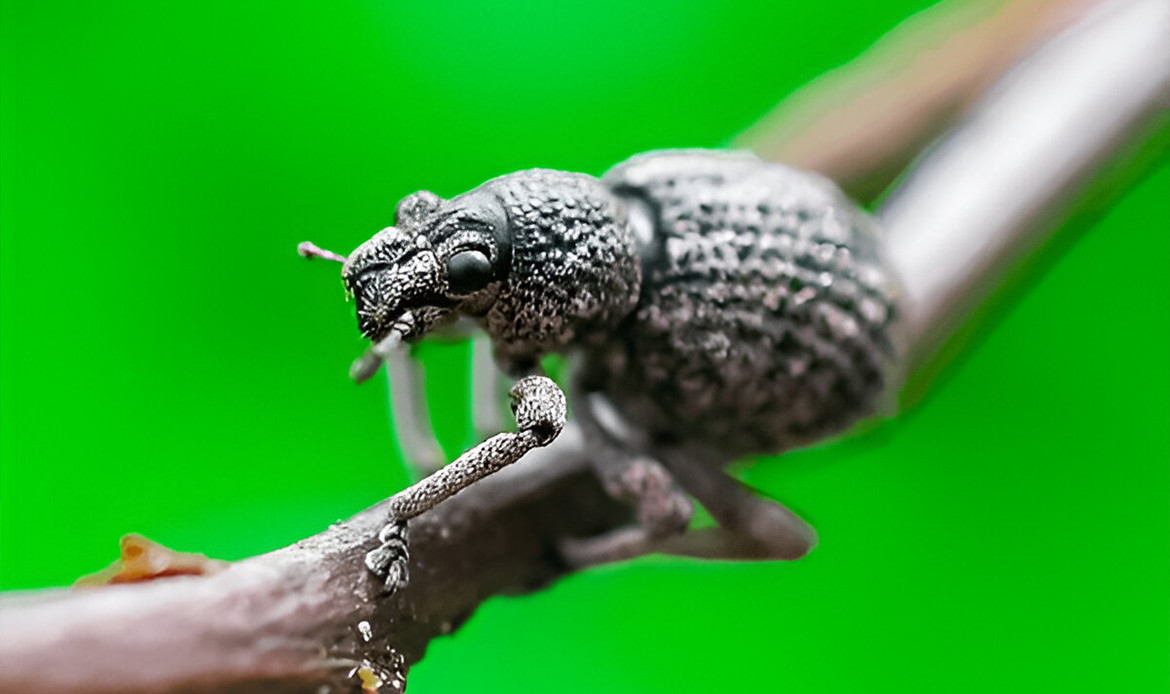
Canterbury Knobbled Weevil Rediscovered: A New Zealand Success
A Remarkable Rediscovery The Canterbury knobbled weevil (Hadramphus tuberculatus), one of New Zealand’s most elusive insects, has emerged from the shadows of extinction to become a symbol of conservation hope. This critically endangered species, once thought lost to time in 1922, made a stunning comeback when it was rediscovered in 2004 at Burkes Pass Scenic Reserve. The rediscovery sparked renewed interest in native insect conservation and highlighted the importance of preserving New Zealand’s unique ecological heritage.
Table of Contents
Physical Characteristics and Habitat
This distinctive weevil measures 11.7-16.3 millimeters in length and 6.5-8.3 millimeters in width, featuring a dark brown body adorned with greyish-brown scales and its characteristic knobbed back. The species demonstrates a preference for high-altitude environments, specifically thriving at around 670 meters within conservation reserves where its host plant, Aciphylla (speargrass), flourishes. The intricate patterns on its exoskeleton provide excellent camouflage among the speargrass plants, making it a masterpiece of evolutionary adaptation.
Historical Context and Decline
In the 1870s, the Canterbury knobbled weevil was a common sight across the Canterbury Plains. Several factors contributed to its near extinction:
- Removal of speargrass by farmers
- Introduction of predatory European rats
- Competition from other species
- Habitat loss and degradation
- Agricultural expansion
- Changes in land management practices
- Climate fluctuations
Population Dynamics and Monitoring
Scientific studies have revealed concerning population trends. Between 2009 and 2011, researchers documented a steady decline in numbers:
- 2009: 138 individuals
- 2010: 90 individuals
- 2011: 76 individuals
Modern monitoring techniques include:
- GPS tracking of populations
- Regular population surveys
- Habitat assessment
- Predator monitoring
- Weather pattern analysis
Recent Breakthrough and New Hope
In a remarkable turn of events, a new population was discovered in December 2024 in the high country behind Mount Somers / Te Kiekie. This discovery occurred when farmer John Evans stumbled upon the beetles while clearing pest traps, finding them clinging to speargrass plants. The discovery has reinvigorated conservation efforts and provided new opportunities for genetic diversity studies.
Comprehensive Conservation Challenges
The Canterbury knobbled weevil faces multiple threats to its survival:
- Limited food source availability
- Invasive predators
- Climate-related risks
- Small population size vulnerable to local extinctions
- Habitat fragmentation
- Human activity impact
- Disease susceptibility
- Genetic bottlenecks
Enhanced Ecological Significance
The species holds a crucial position in New Zealand’s biodiversity:
- Ranked as the third most endangered creature in New Zealand
- Has been part of New Zealand’s fauna for 60 million years
- Plays a unique role in speargrass ecology
- Serves as an indicator species for ecosystem health
- Contributes to plant pollination
- Maintains ecological balance

Expanded Conservation Efforts
The Department of Conservation has implemented several measures:
- Funding dedicated research programs
- Population monitoring
- Habitat restoration initiatives
- Speargrass protection
- Invasive species management
- Public education campaigns
- Collaboration with local communities
- Scientific research partnerships
- Genetic diversity preservation
Advanced Symbiotic Relationship Studies
The relationship between the weevil and its host plant is complex:
- Adults feed on speargrass pollen
- Larvae depend on speargrass roots
- Seasonal feeding patterns
- Impact on plant reproduction
- Mutual evolutionary adaptations
- Ecosystem service provision
- Population dynamics correlation
Future Prospects and Research Directions
While challenges remain, the discovery of a second population has opened new possibilities for conservation:
- Increased genetic diversity potential
- Multiple population sites reducing extinction risk
- Opportunities for further research and protection strategies
- Development of breeding programs
- Habitat expansion possibilities
- Climate change adaptation studies
- Community engagement initiatives
Conservation Implications and Broader Impact
The rediscovery and ongoing survival of the Canterbury knobbled weevil represents more than just the preservation of a single species. It demonstrates the importance of:
- Continuous habitat protection
- Long-term ecological monitoring
- Community involvement in conservation
- Persistence in wildlife preservation efforts
- Biodiversity maintenance
- Ecosystem restoration
- Scientific research
- Public awareness
Technological Advances in Conservation
Modern conservation efforts employ cutting-edge technologies:
- DNA analysis for population studies
- Drone monitoring of habitat
- GIS mapping systems
- Climate modeling
- Population viability analysis
- Remote sensing technology
- Database management systems
Conclusion
This remarkable story of rediscovery serves as a powerful reminder that species thought lost can sometimes be found again, reinforcing the value of persistent conservation efforts. The Canterbury knobbled weevil’s journey from presumed extinction to rediscovery stands as a testament to the resilience of nature and the importance of dedicated conservation work in preserving New Zealand’s unique biodiversity. Its continued survival depends on ongoing collaborative efforts between scientists, conservation authorities, local communities, and landowners, making it a true symbol of conservation success through partnership and persistence.
